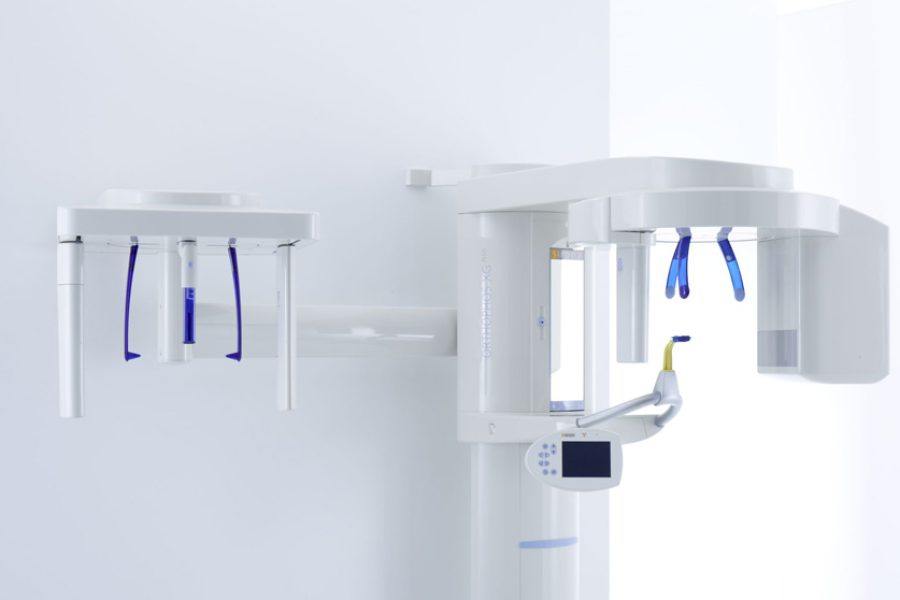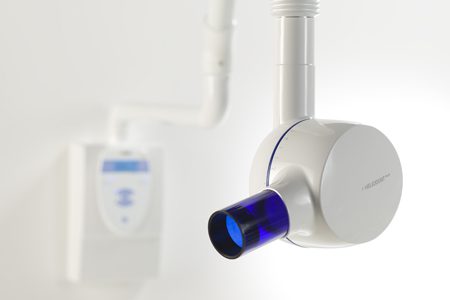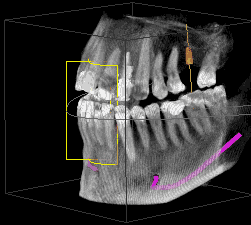Digital X-ray (DVT)Modern X – ray-radiation: precise, detailed and 3-D
What is Digital X-Ray?
We continuously keep our eye on new technologies in order to make your dental treatment even more convenient. With today’s technology, we can detect and treat tooth diseases even more efficiently and thoroughly while making checkups and procedures also more comfortable for you.
Similar to traditional X-ray technology, the new digital X-ray systems allow for a far more extensive diagnostic and enables us to detect dental diseases such as decay or bone loss für example.

The biggest advantage of digital X-ray is the slightly faster process and the resulting lower exposure to radiation for the patient. In addition to that there are enhanced possibilities for postprocessing the digital pictures: The dentist can adjust the contrast and brightness of the pictures in order to optimize diagnosis and find even the smallest areas of decay. Thereby, digital X-ray systems provide crucial information about the exact location of a wisdom tooth or the osseous conditions for a possible implantation.
In addition to the lower radiation exposure, the digital X-ray offers additional advantages for the patient: It is easy and fast to integrate digital X-rays in the course of a treatment. No waiting time while the picture is being developed. Instead, the picture is transferred to the dental offices’ PC system within seconds. Therefore, the treatment can continue immediately and the diagnosis can be explained right in the treatment room while looking at the digital picture on the PC monitor.

Low radiation: Digital x-rays with CBCT (Cone beam computed tomography):
Three-dimensional X-ray imaging method
Two-dimensional X-ray images may not always provide the necessary precision. For this reason, we have invested in the modern technology of digital X-ray technology with CBCT.
This enhanced x-ray system allows to take three-dimensional images of the jaw. Thus, in contrast to normal two-dimensional X-ray images, we are able to detect fine details such as the individual density of the jaw bone or the exact course of the mandibular nerve.
What special advantages does CBCT offer?
Traditional X-rays provide two-dimensional summation recordings of the jaw or a particular region of the jaw. These are absolutely sufficient in many cases. However, in some cases, an accurate diagnosis demands a higher granularity.
In such cases, the additional third dimension provides significant advantages:
- extremely detailed and true to scale anatomical images without distorted misrepresentations for a particularly accurate diagnosis
- particularly high level of security at (surgical) procedures of difficult areas of the jaw
- identification of potential risks due to special attention to detail
- a significantly lower x-ray exposure compared to a conventional CT and a traditional X-ray image
- due to the imaging plate being significantly more sensitive compared to conventional X-ray films, unnecessary repetitions of X-rays can be avoided
What is the radiation exposure of CBCT?
We understand that our patients are very health conscious. We therefore invest in innvoative methods and techniques in order to lower radiation doses to a bare minimum.
The radiation exposure of a digital X-ray is relatively low. It is about 200 mSv. Comparing the exposure of a digital X-ray to a flight from Frankfurt to New York, the radiation exposure of a CBCT is not higher than a round-trip flight from Frankfurt to New York (the radiation exposure during a round-trip flight is about 180-200 mSv). We also try to minimize exposure by limiting the image detail or opting for a slightly lower image resolution.
What is CBCT used for?
The CBCT can be used for different reasons. Here are some of the most important areas of application:

- Especially detailed diagnosis in order to preserve diseased teeth
- Detailed and true to scale tracing of the root canal
- Assessment of the position of individual teeth (e.g. wisdom teeth) with special consideration of the facial nerve and the maxillary sinus
- Improved assessment of bone density, texture and bone offer in case of a possible implant treatment
- Three-dimensional planning and simulation of implants
- Diagnosis of diseases in the maxillary sinus area